Introducing cave formation repair in the Yucatán Peninsula, México.
– by Ana K. Celis
Introducing cave formation repair in the Yucatán Peninsula, México.
Imagine standing at the entrance of a dark cave. The world outside is busy, “alive” with the sounds of traffic, people, with everything familiar and recognizable. But as you step inside, everything changes. Now you crawl through tight passages, with nothing familiar and everything barely recognizable through the small light beam coming out from your headlamp. Bats are flying all around you; unknown insects climbing up your clothes. You are sweating, muddy, breathing a heavy and damp air.
Would you choose this place for your next vacation? Probably not, because for most people, caves are related with darkness, loneliness and claustrophobia. But, contrary to what you might first think, in fact, every year, more people are choosing to visit caves. The most basic definition of a cave describes it as a natural cavity with an entrance large enough to allow humans to enter. The downside of this story is that with more people visiting caves, new conservation challenges have arisen. Particularly worrisome are the caves located in developing countries, where urbanization and infrastructure building are threatening the underground ecosystems faster than the conservation efforts can cope with.
My name is Ana K. Celis, cave scientist and director of Karst Lab México, an organization dedicated to cave conservation and management of underground ecosystems. In January 2025, I became Fellow at The Maintainers, and in this blog, I will showcase the details of my Impact Project related with building capacity for the introduction of the concept of speleothem repair in cave tourism destinations.
Caves and cenotes of the Yucatan Peninsula
The Yucatan Peninsula, in México, is a karst region with a world-renowned tourist appeal. The word “karst” relates to a type of landscape, one where natural depressions, such as caves and sinkholes, are formed when the limestone bedrock below the surface, is dissolved by water. But here, a distinctive type of void predominates: cenotes. From the Mayan “ts’ono’ot” or “d’zonot”, cenotes are outstanding crystal-clear sinkholes filled with water, also referred as windows to the aquifer (Figure 1A).
Cenotes can be located either inland or in proximity to the coast, but in both cases, they resemble natural pools that are conveniently accessible to visitors. Two other distinctive karst features that accompany the recreational use of cenotes are, the caverns, defined as the underground area with natural light predominating during the daytime (Figure 1B), and the caves, the subterranean zone of permanent darkness, and only accessible through cave diving (Figure 1C). Tourist activities inside these ecosystems have created new challenges for their conservation.
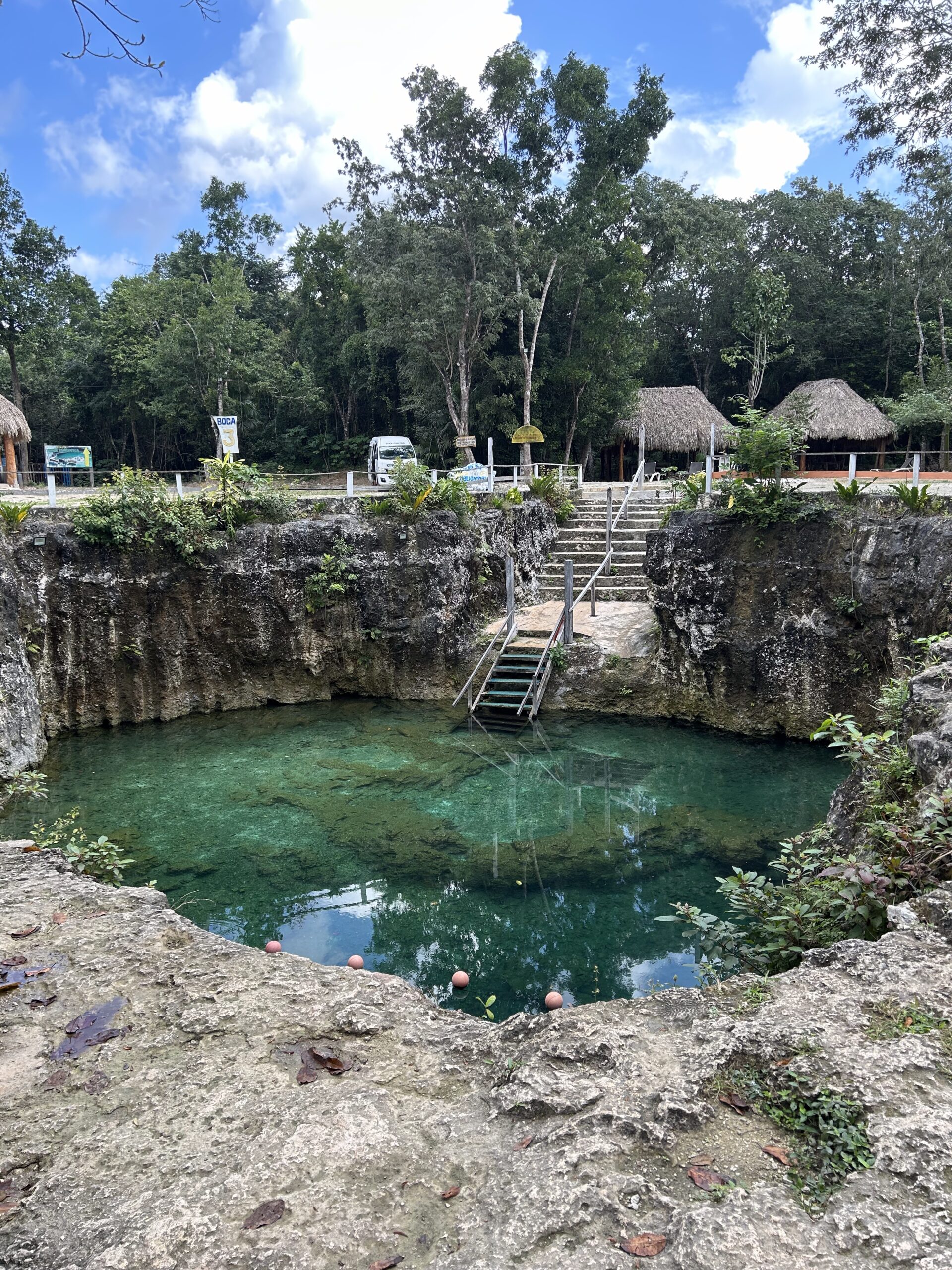
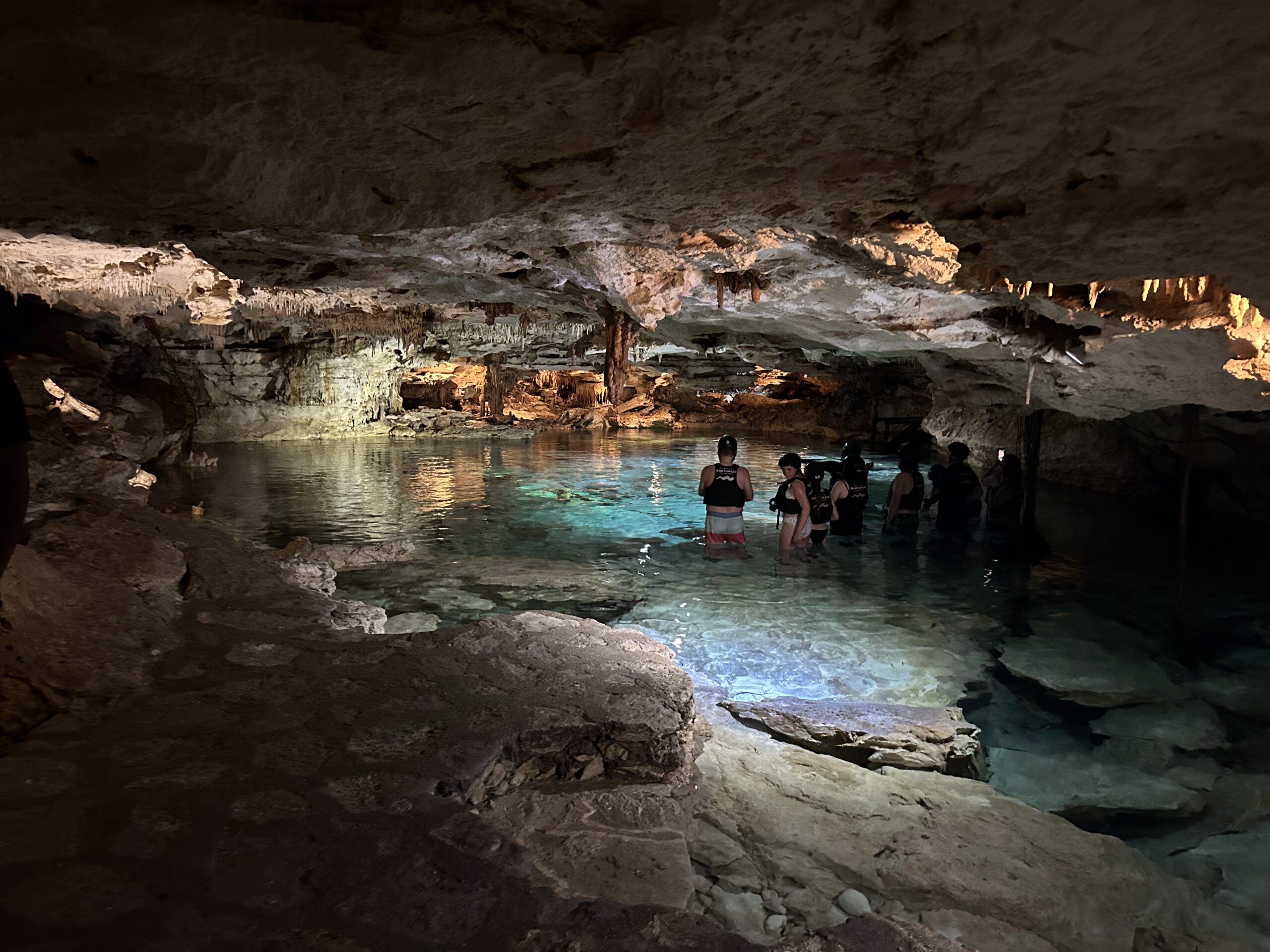
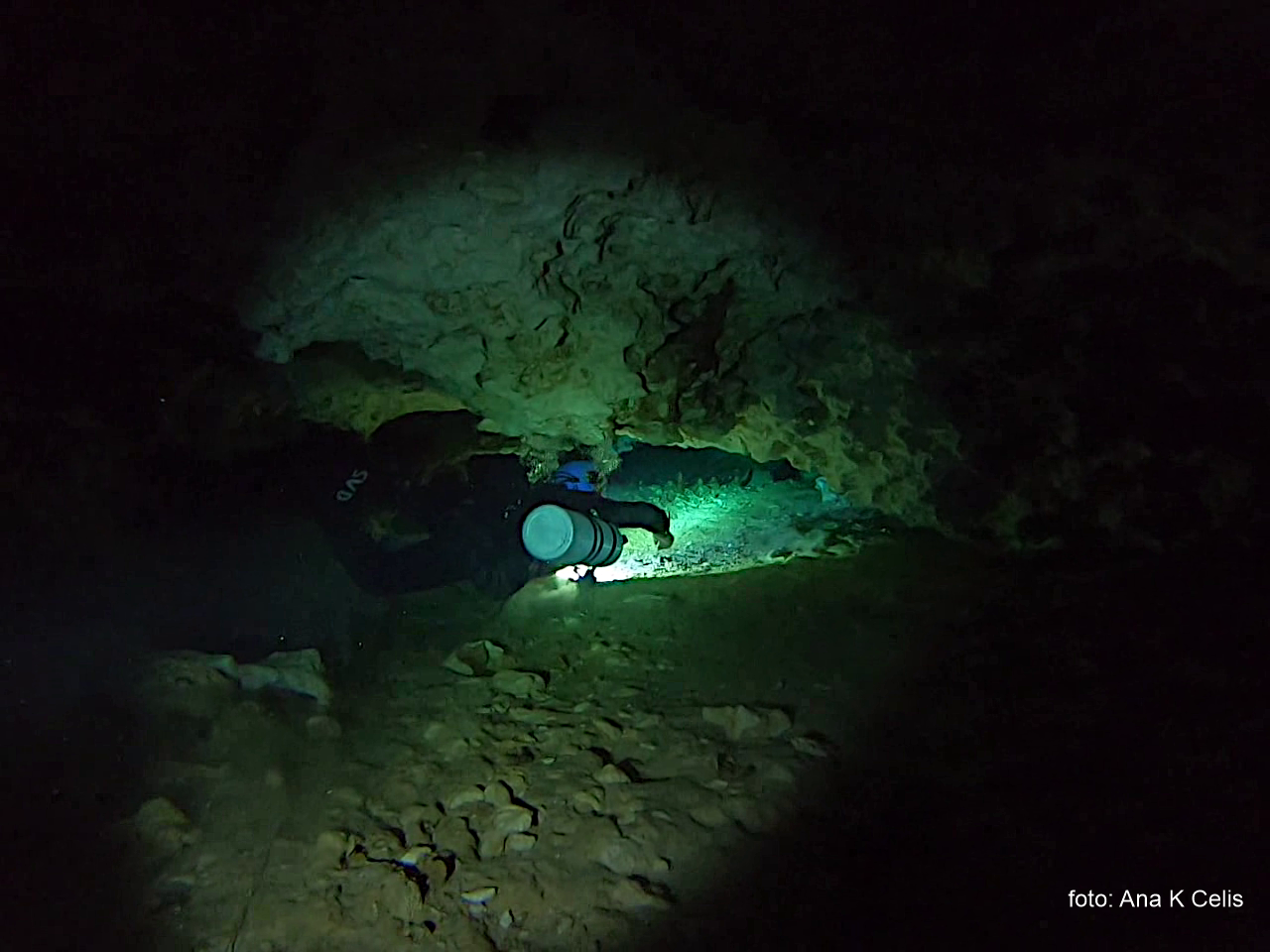
Cenotes, caverns and caves have become prime tourist attractions that generate economical revenue for the local communities. These places currently promote recreation and water activities such as snorkeling and scuba diving, but also an exclusive location for weddings, retreats, Mayan ceremonies, and even restaurants. The versatile use of the cenote-cavern-cave triad has led to reactions warning of the overall impacts of urbanization, tourism development and recreational predominance of the most important freshwater reservoir of the region.
Impacts of visiting caves and cenotes
Regardless of the motivation and the good intentions, in all cases, human visits to caves generate impacts, which result often irreversible, on these highly vulnerable environments.
What not many cave visitors think about, is that caves and cenotes are living ecosystems, characterized by low energy, low availability of food, and little or none natural light. Therefore, every visit into these locations can represent:
- an introduction of energy: in the form of heat, emitted by the human body and by our own exhalations;
- a nutrient input: food intentionally carried in by visitors. But also, the unintentional introduction of dust, hair, dead cells and lint, all becoming food in a food poor environment.
- a potential change in the physic, chemical, geological, biological and/or microclimatic conditions.
In the Yucatan Peninsula, access to learning about caves and cenotes remains a challenge for the local population. Something that we have noticed is that the words “maintenance” and “repair” are not part of the day-by-day duty of running a cenote business. Karst Lab Mexico’s mission is to facilitate the dialogue between local cave managers to promote a better-informed use of caves and cenotes in the area. From January to March 2025, we developed an Impact Project centered in preparing the terrain to start a community of practice around cave formation repair.
Cave formations
Cave formations are probably the most impressive underground features: stalactites, stalagmites, soda straws, draperies, and helictites, to name just a few examples of what the majority of the public recognize when visiting a cave. Properly named speleothems, they are mineral deposits formed by the variety of ways in which water flows (dripping, seeping, ponding, etc.) (Figure 2A and 2B). Most speleothems are formed of calcite, but also aragonite and gypsum are frequent. It is known that cave formations are one of the most well-preserved natural archives of Earth. This is the reason why scientists have been studying speleothems to understand the environmental conditions of the past. But, the most amazing part of these naturally occurring mineral deposits is that they typically grow only one cubic inch or even less, every 100 years, with larger formations taking thousands of years to reach their current size.
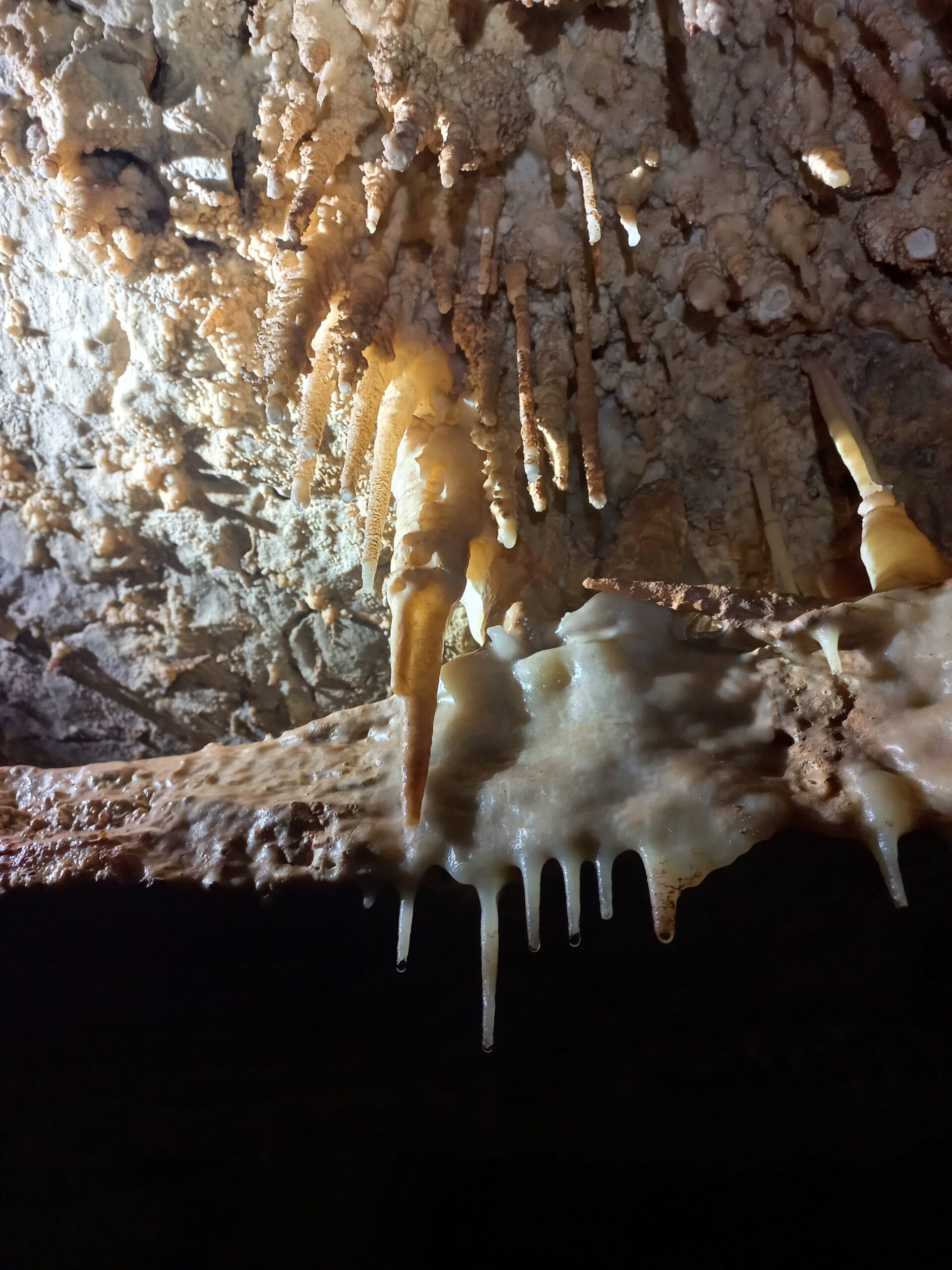
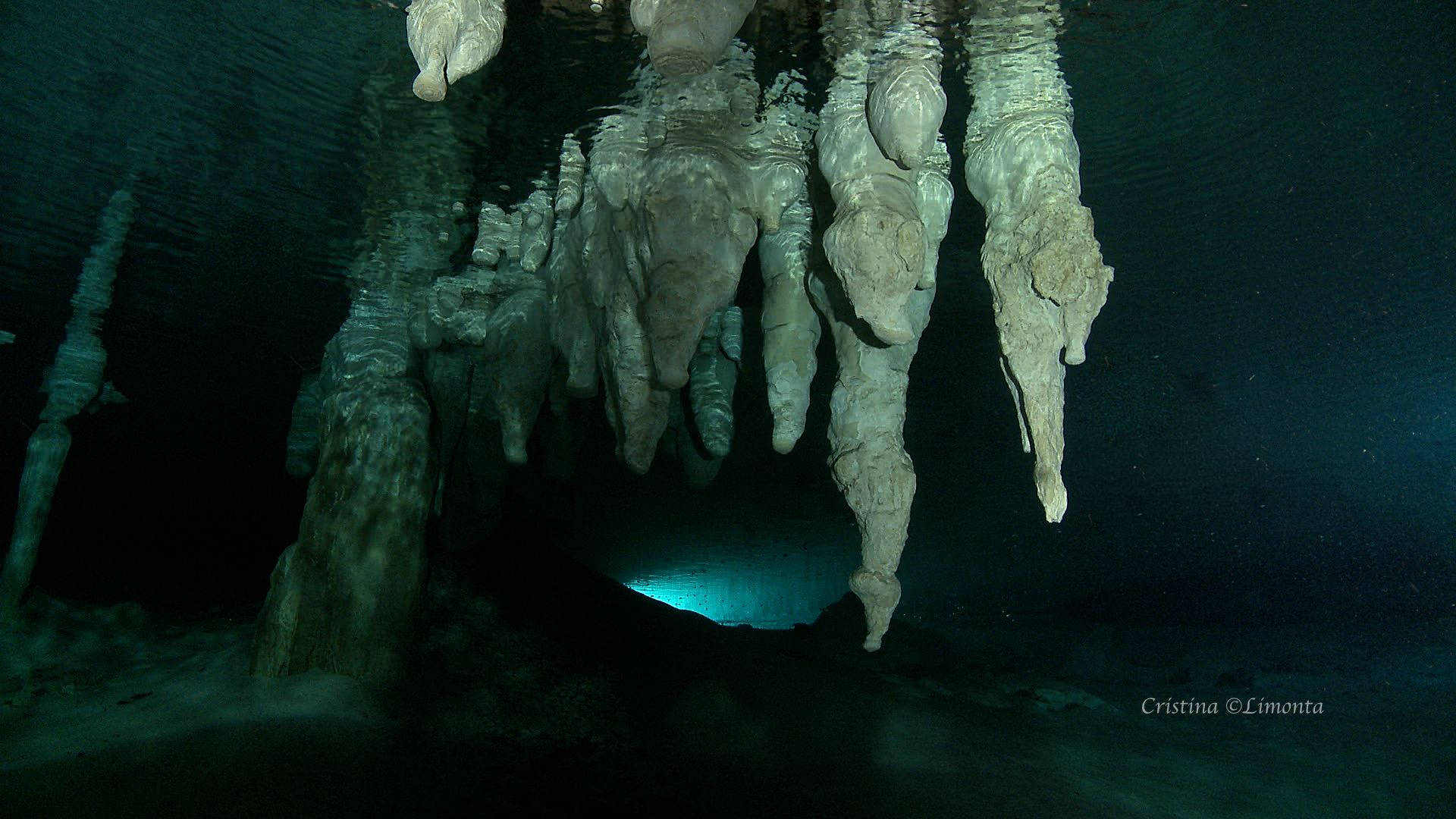
This Impact Project was made possible through a key collaboration with The Cave Formation Repair Project (CFRP), an all-volunteer U.S. organization funded in 2018 by Michael C. Mansur. As of April 9, 2025, the CFRP’s metrics includes the repair of 1356 broken formations; 6,206.1 volunteered cave hours and, 406,686.5 miles traveled round trip from home to work on the Project.
With presence in six states of the United Stated (New Mexico, Texas, Colorado, Nevada, South Dakota, and West Virginia), the nexus between CFRP and Karst Lab México emerged naturally under the principle of spreading knowledge about formation repair and cave conservation. Currently, countries such as Australia, Slovenia and Great Britain are implementing their own projects following the repair techniques and methodologies learned from the CFRP.
Formation repair: step-by-step
In March 2025 I traveled to meet with Mike Mansur in New Mexico. Since our first communication back by the end of 2024, Mike has been very supportive and he agreed on putting together a CFRP trip to Carlsbad Caverns National Park where I could have the opportunity to learn by-doing the methods and techniques of cave formation repair. Following, is a snapshot of the process based on my own experienced of learning by doing. The complete guidelines to perform speleothem repairs are described in the third edition of the The Cave Formation Repair Project: Restoring the Beauty of America’s Great Caves (Mansur, 2024).
STEP 1. Finding broken formations
Any serious cave management, starts with an inventory of its resources, including speleothems. The idea behind building cave inventories is that only by knowing what exists at a certain time, changes can be noticed and put in perspective (Figure 3A). Especially in frequently visited caves, human activities can lead to the accidental breakage of a speleothem (Figures 3A and 3B) Accidents of this kind happen when the trails are too close to the formations, or just because the visitors continually touch, kick or step on them (sometimes as consequence of a poorly planned trail design). In other cases, caves have been vandalized leaving massive breakages that require a complete intervention. In any case, finding broken formations is the first step in organizing a repair campaign. Nowadays, many applications allow to systematize the search of breakage areas, find patterns, and define concentrations. Shape, size, weight, and other physical and/or geographical variables, can help to plan repair interventions. Broken formations that are the result of modern human activities, caused either by accidental or an intentional damage, should be recorded and be considered as part of a cave inventory.
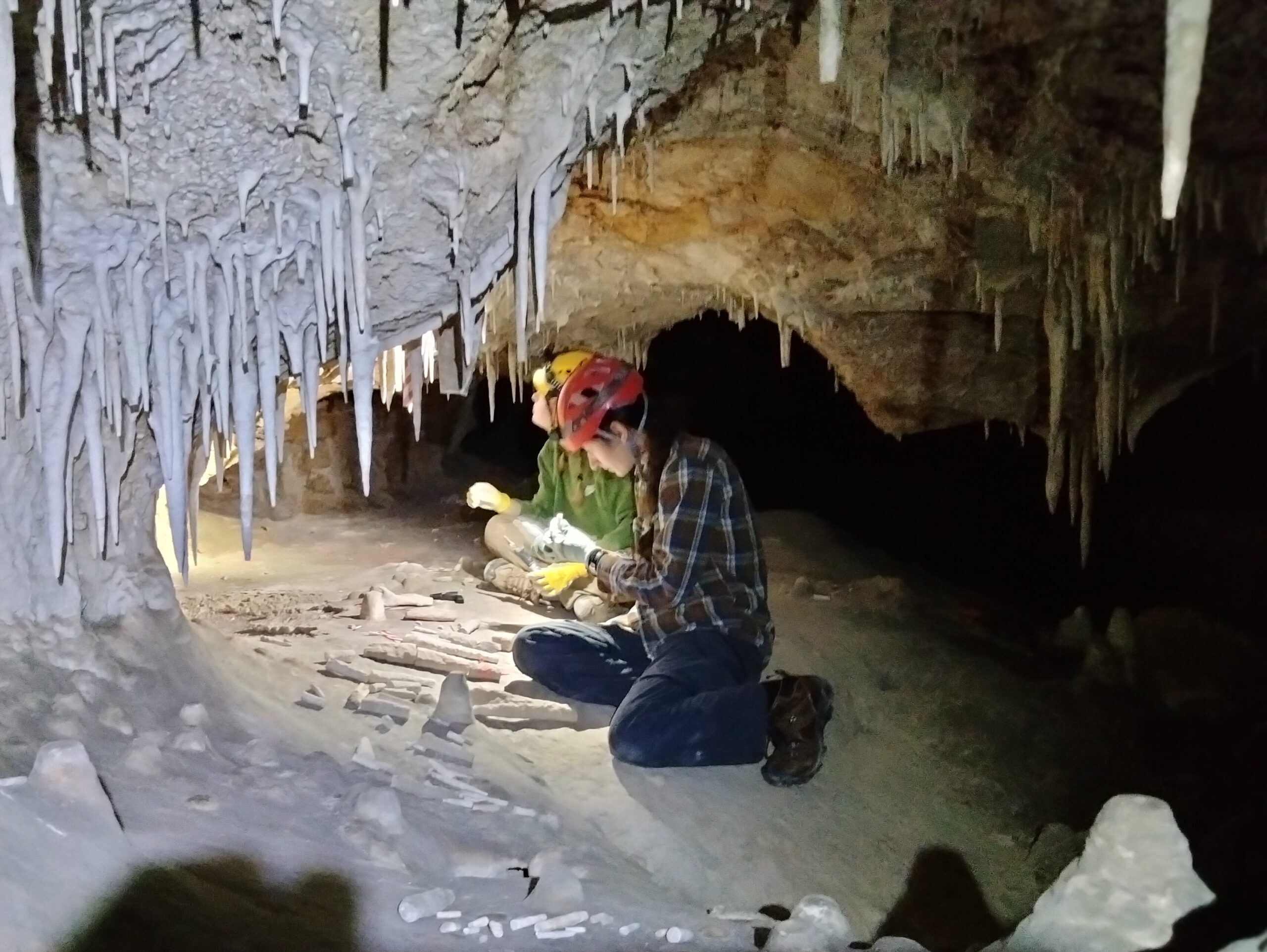
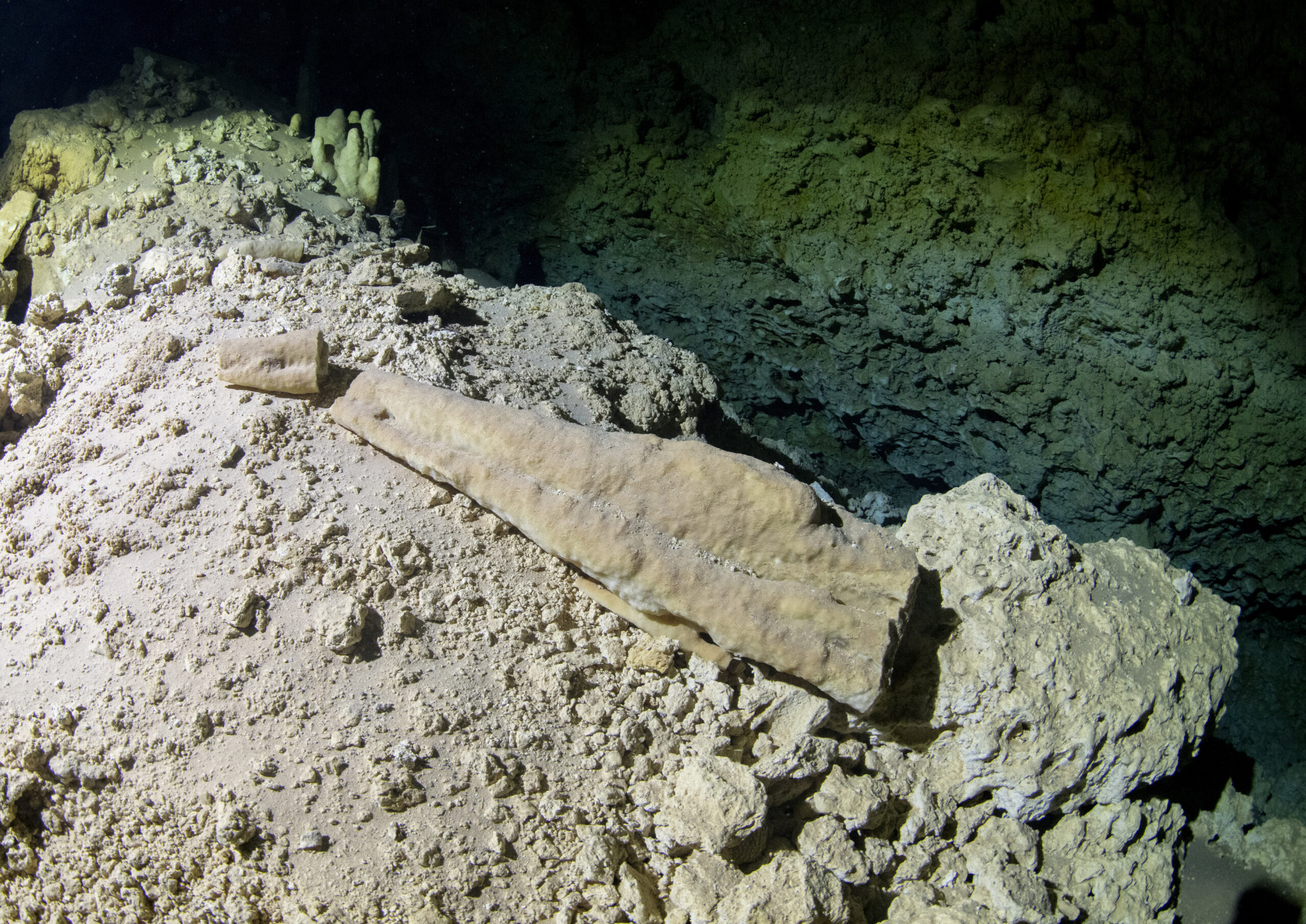
STEP 2. Finding matching broken parts
Once the area for a repair campaign has been defined, the next step is to approach a broken speleothem to observe its breakage details, and to start looking for its missing part(s) (Figure 4A and 4B). I had the chance to work with volunteers with previous repairing experience, which gave me the opportunity to see different approaches to this step. Some people start by picking one broken piece from the floor of the cave and moving around, testing the piece in other broken speleothems, following a kind of trial-and-error technique, until the correct match is found. And I also saw people with stronger abilities to find matches simply by close observation, something probably related with their capacity to retain mental images when sorting between different broken pieces. Below is the process of cave formation repair:
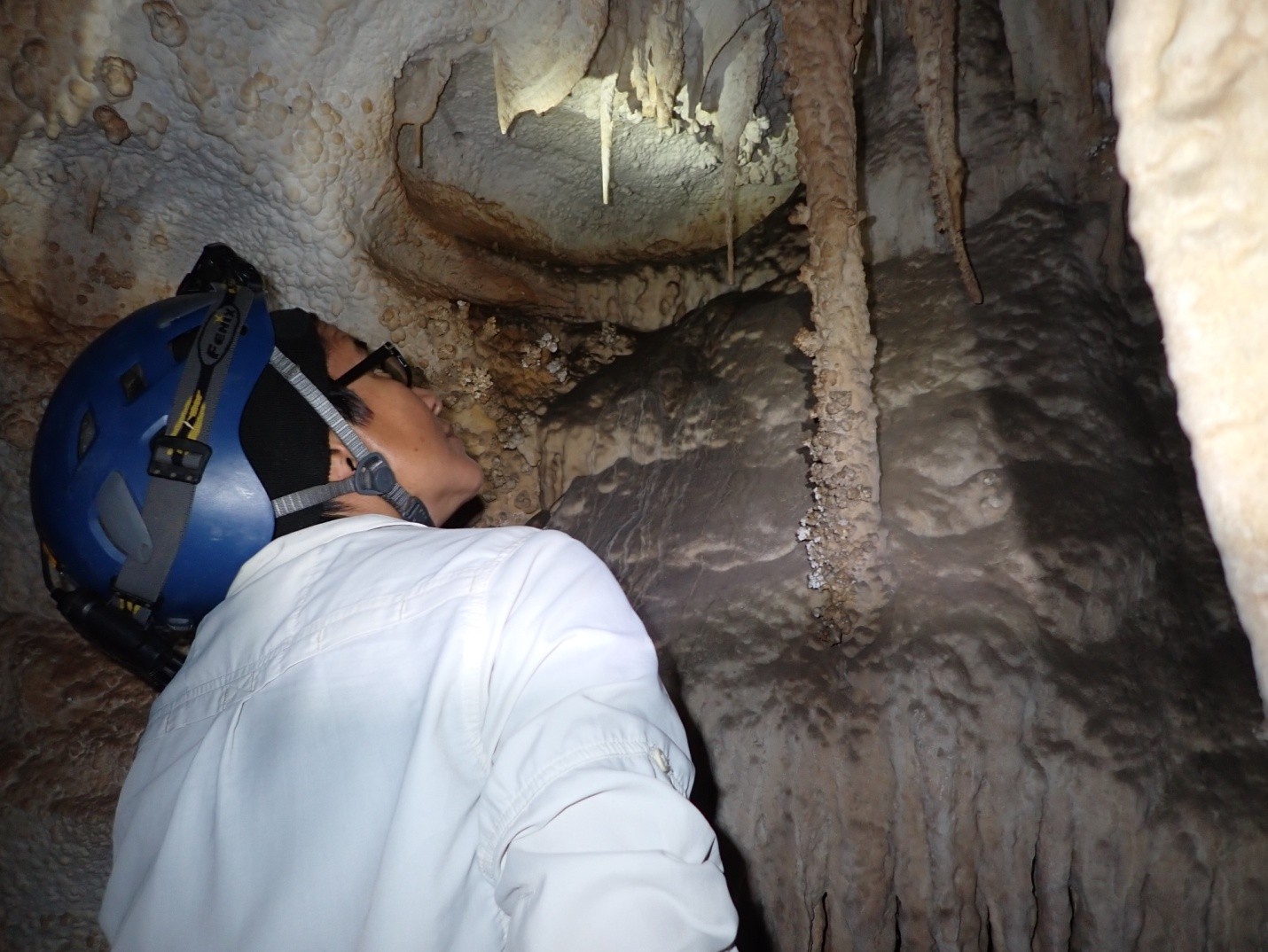
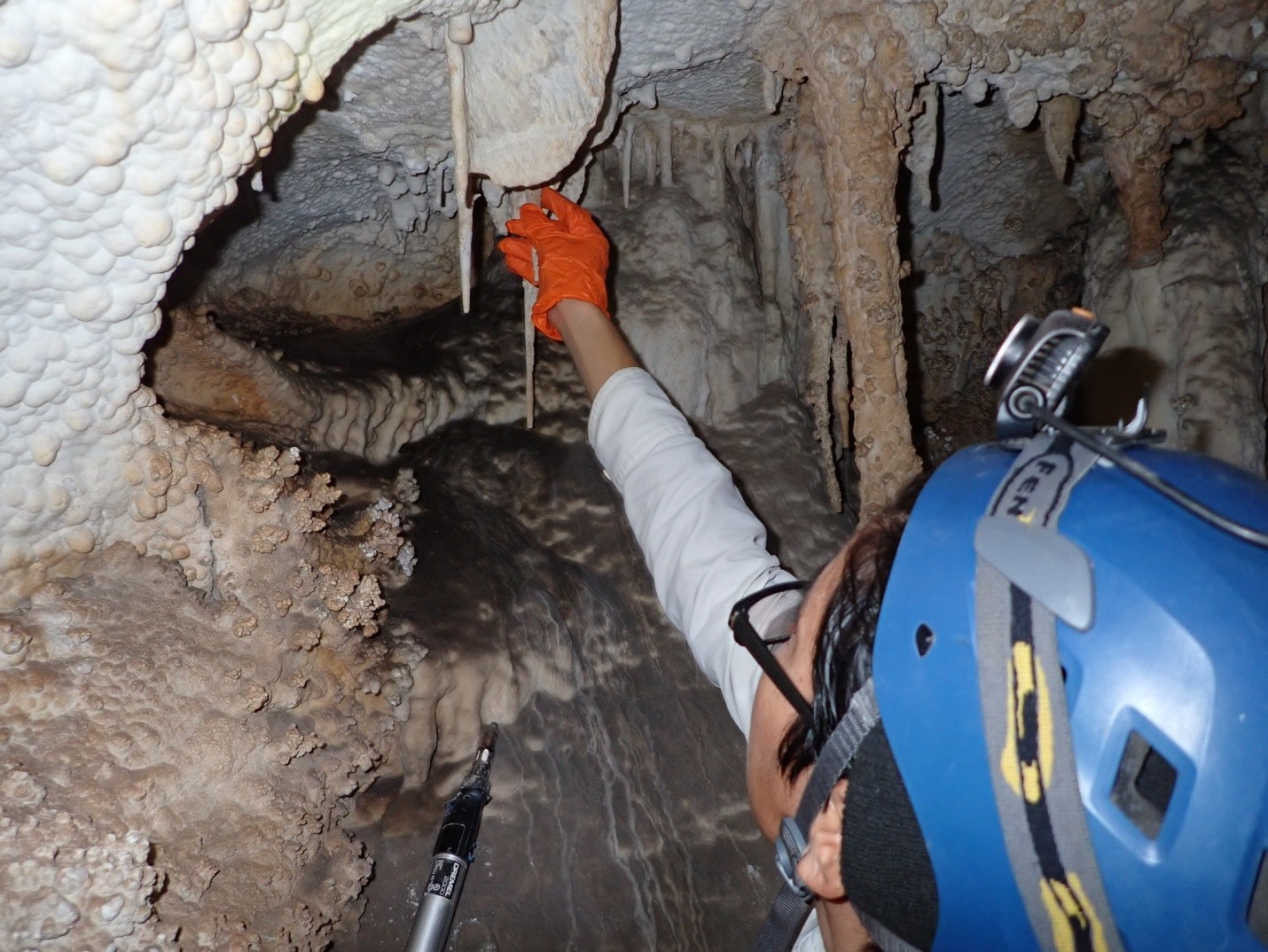
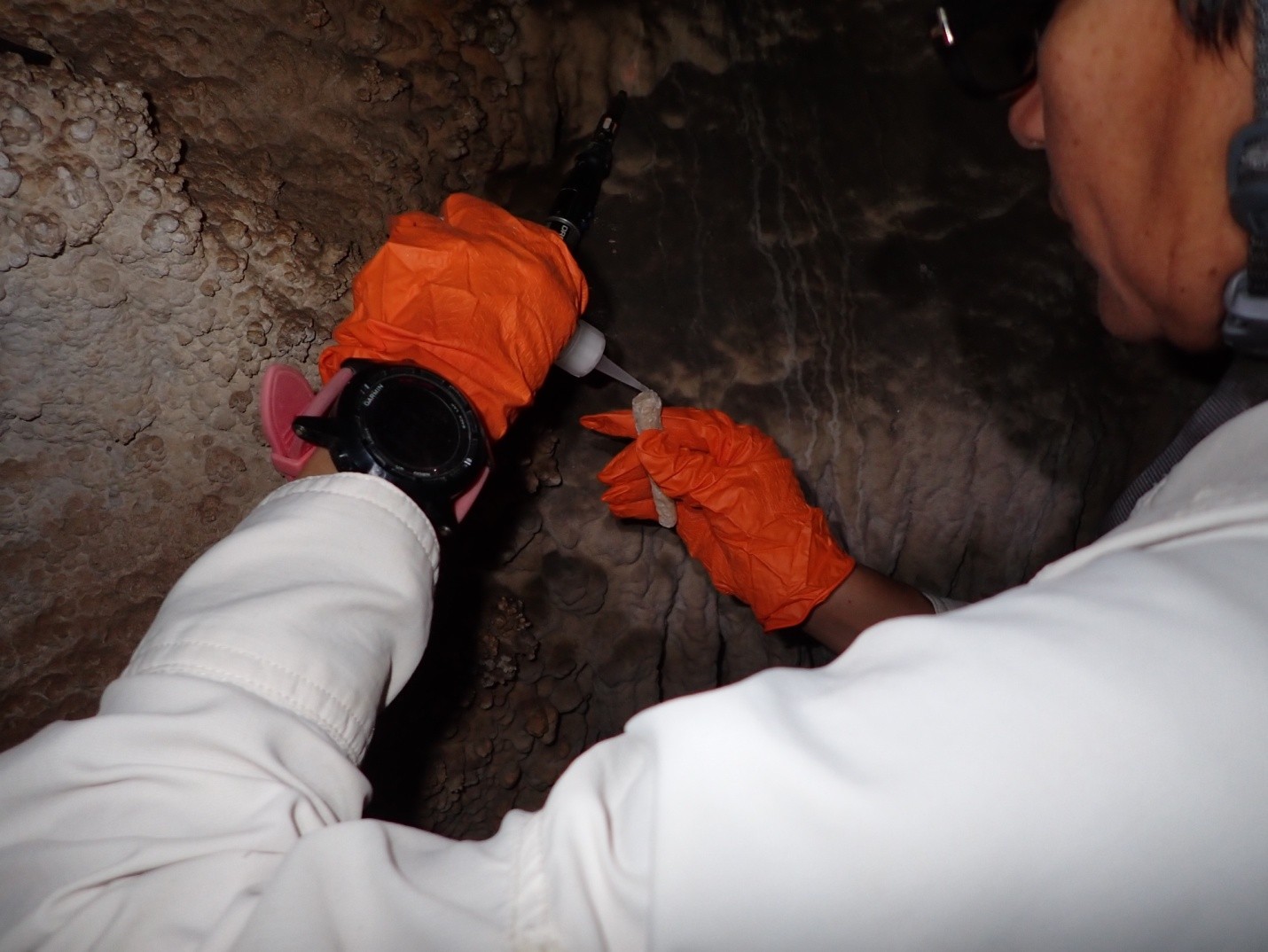
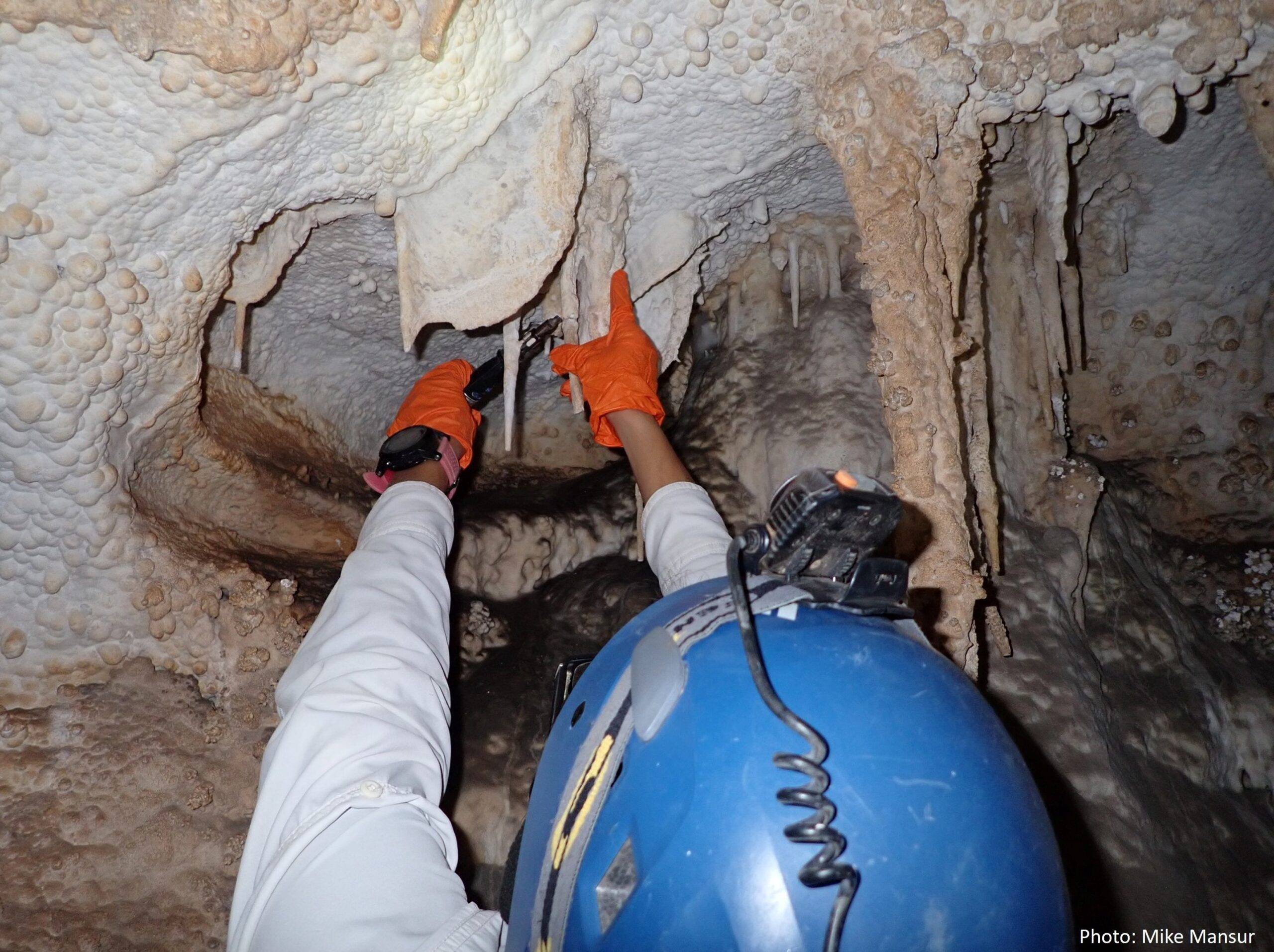
STEP 3. Choosing the type of repair (size, weight and anchor system)
Depending on the size and weight of the broken speleothem, the most important decision to take is on how to support the pieces together after a repair. The first option is to use an adhesive (Super T), being this the best choice for small, and even delicate formations such as soda straws, stalactites and helictites (Figure 4C). Once the bonding has occurred, the final step is to accelerate the cure and secure the bonding by applying heat to the joint area, using a handheld Dremel heater (Figure 4D).
The second option, designed to give a stronger support to bigger or heavier formations, involves drilling holes in the contact faces of both pieces, to insert a stainless-steel joint reinforcement pin between them (Figures 5A and 5B). This process requires a careful definition of the point of contact of the pin in order to warranty the most exact match of the pieces. Once aligned, the joint is reinforced with epoxy. This method is mostly used to repair formations that require a longer bonding time.
Either when repairing a small or a large/heavy formation, you will want to anchor the pieces together as much as possible (Figure 5C). Many times, the solution will require your creativity. Mike Mansur has invented the devices that his team uses to support broken formations. Some of the tools that he has invented are named Stalactijack, Speleoclamp, Speleocup, Speleosplint, and Soda Straw Stand, to name just a few (Figure 5D to 5F).
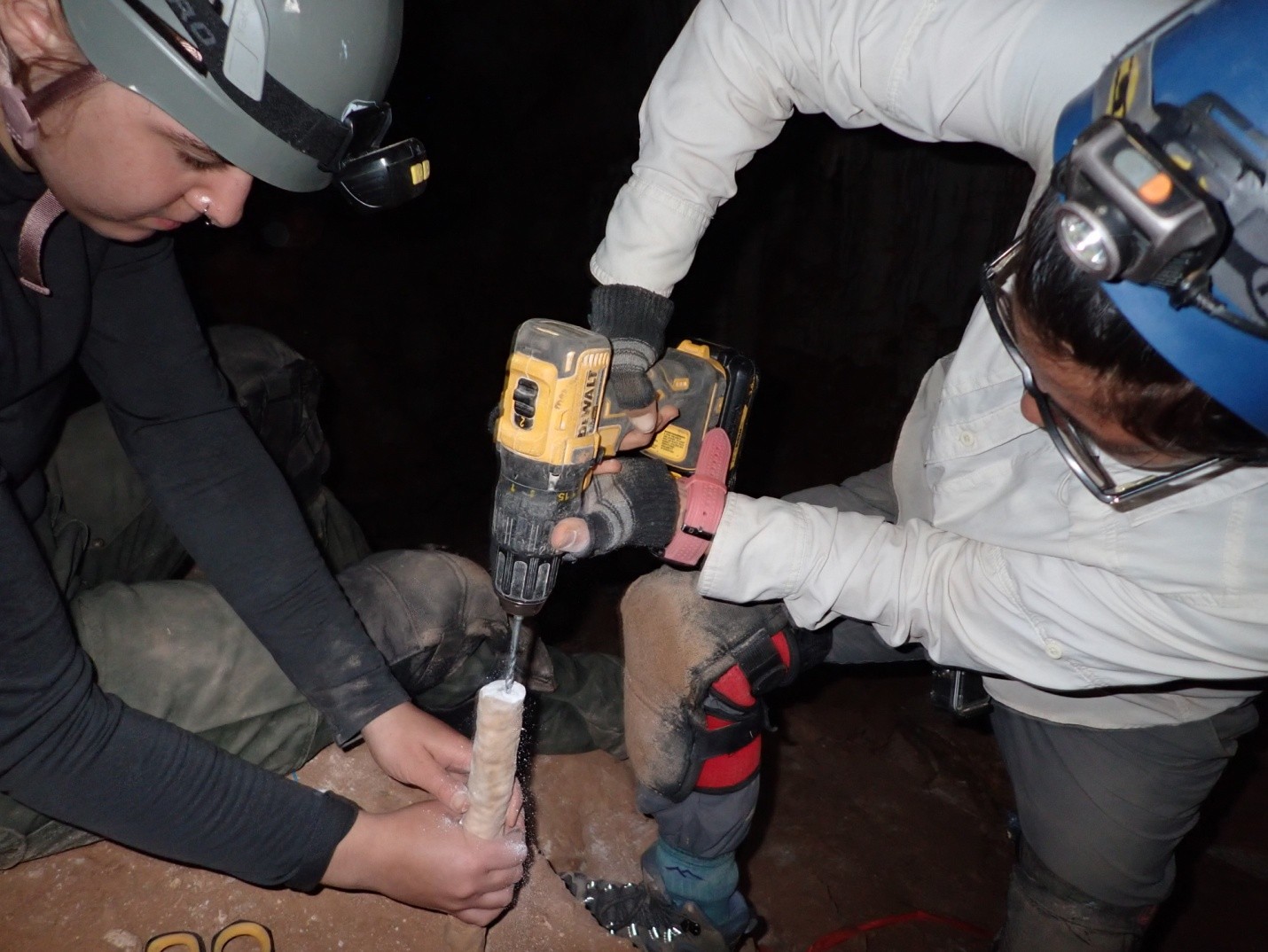
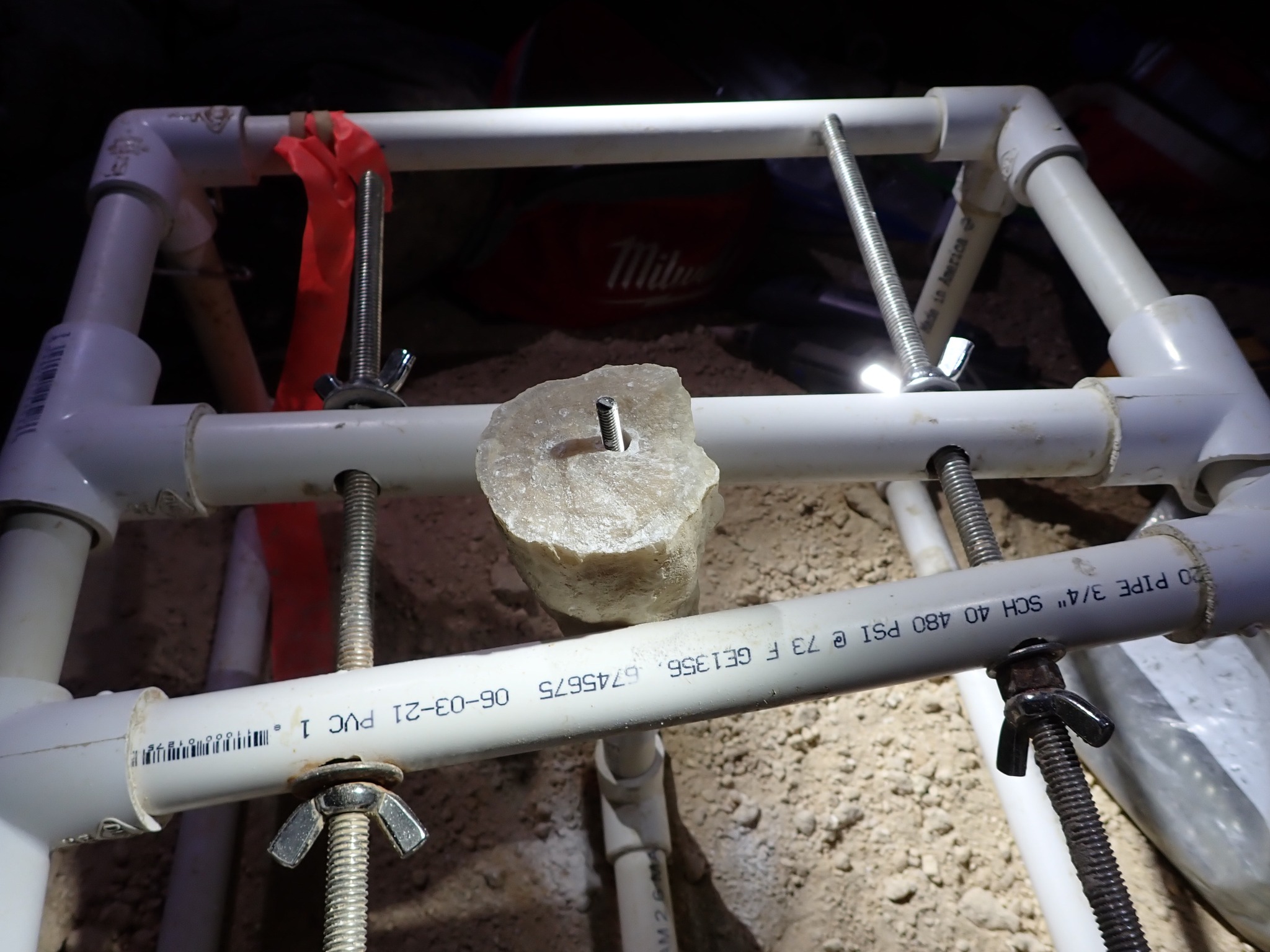
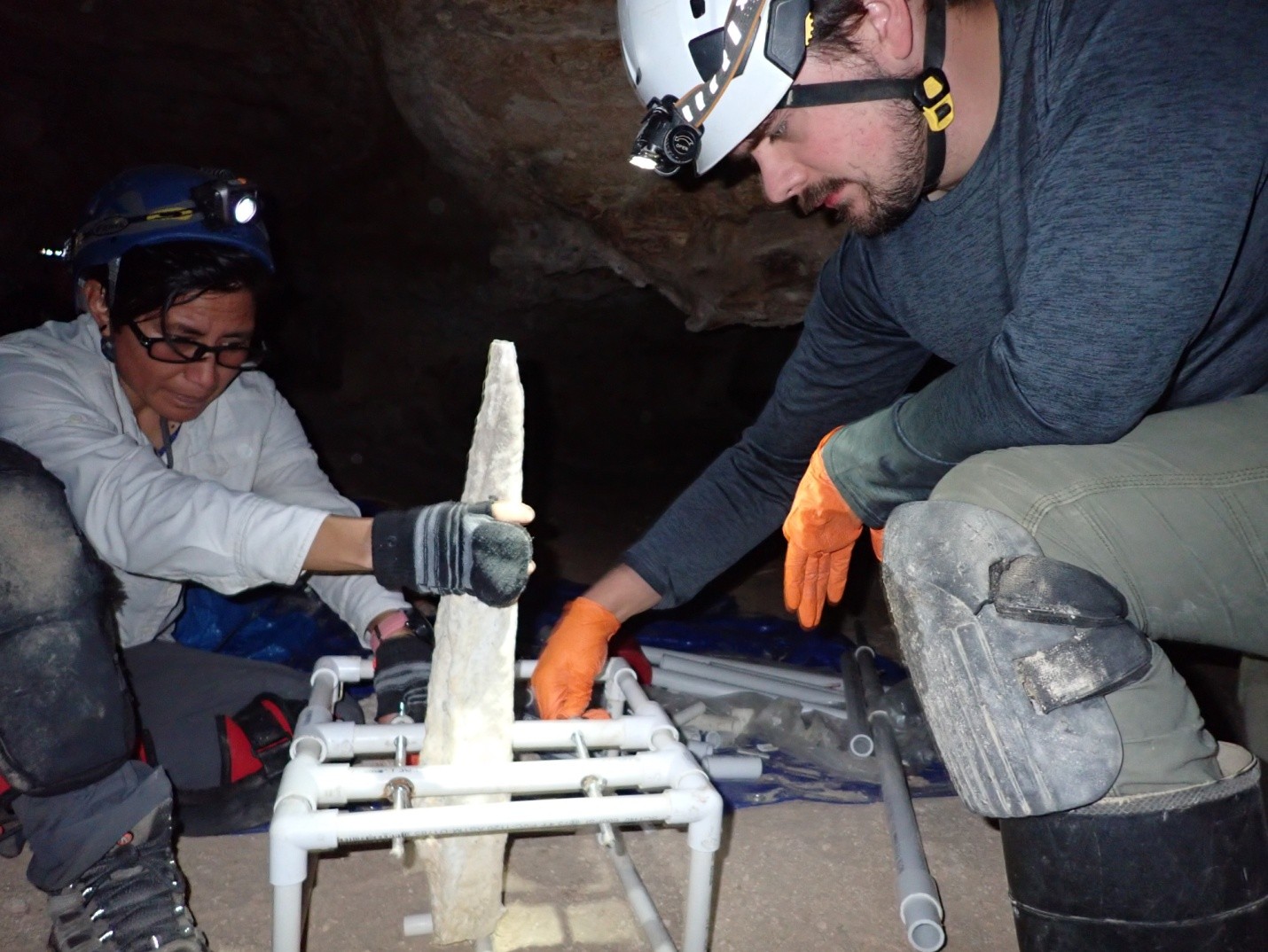
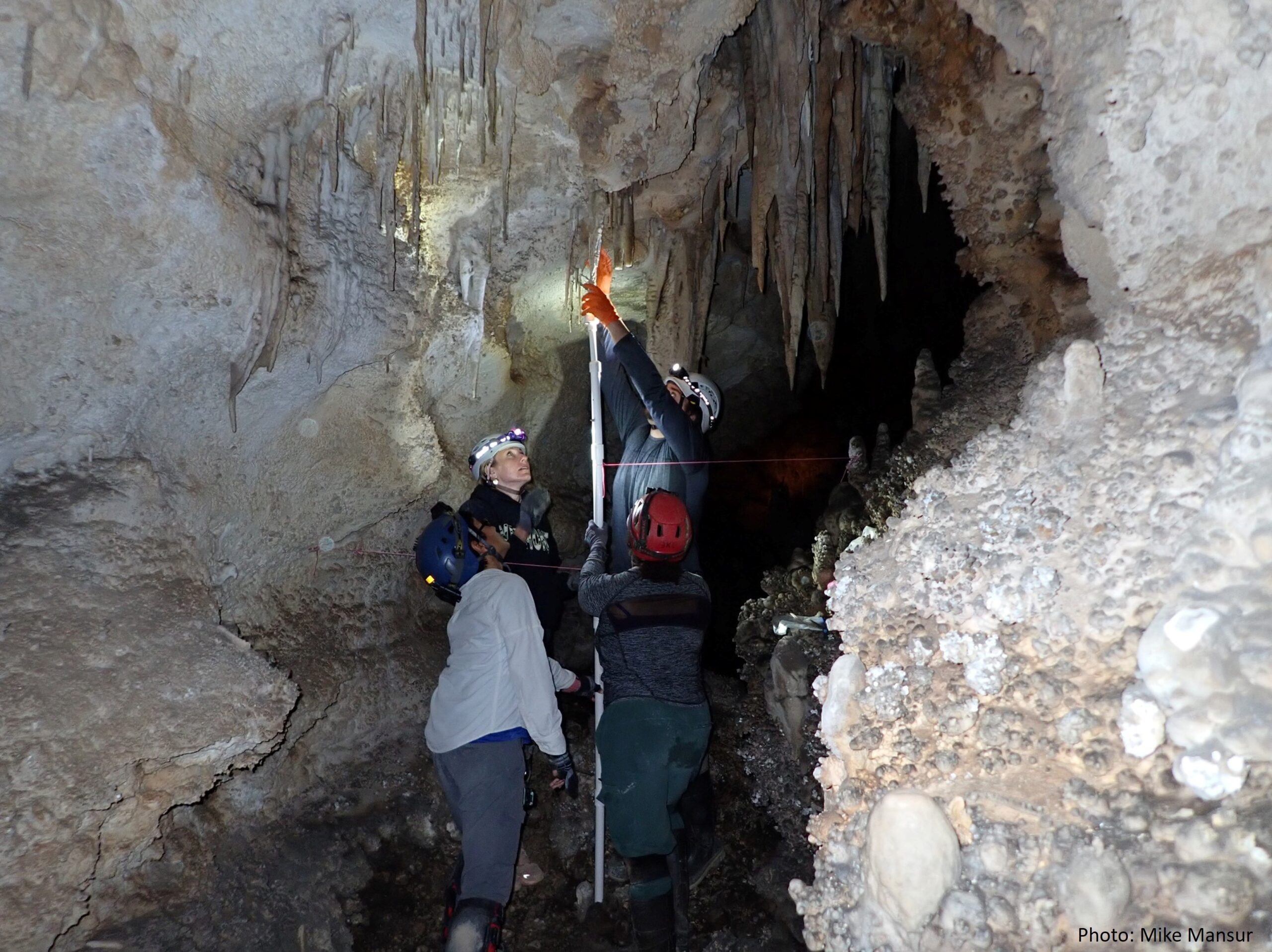
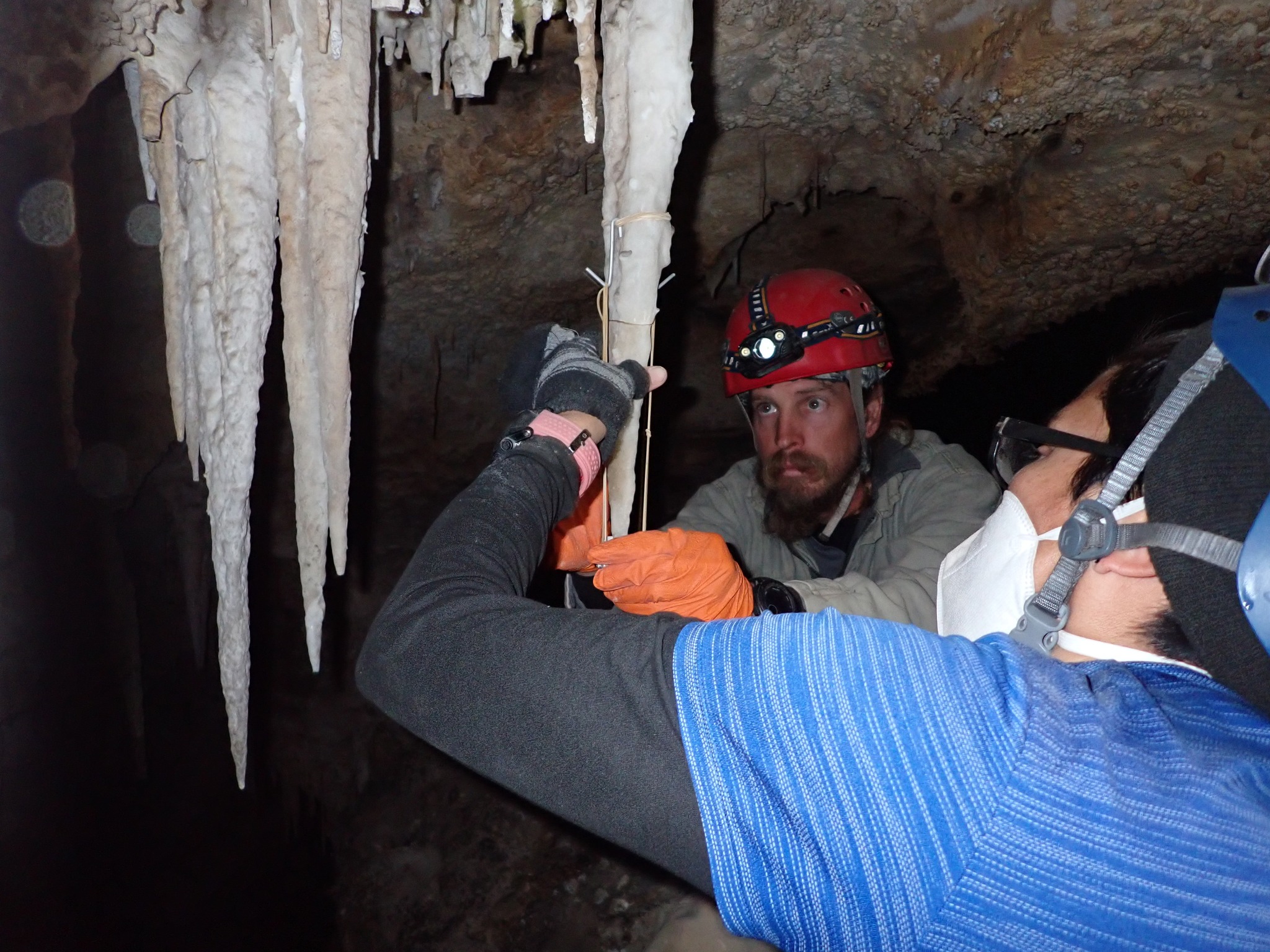
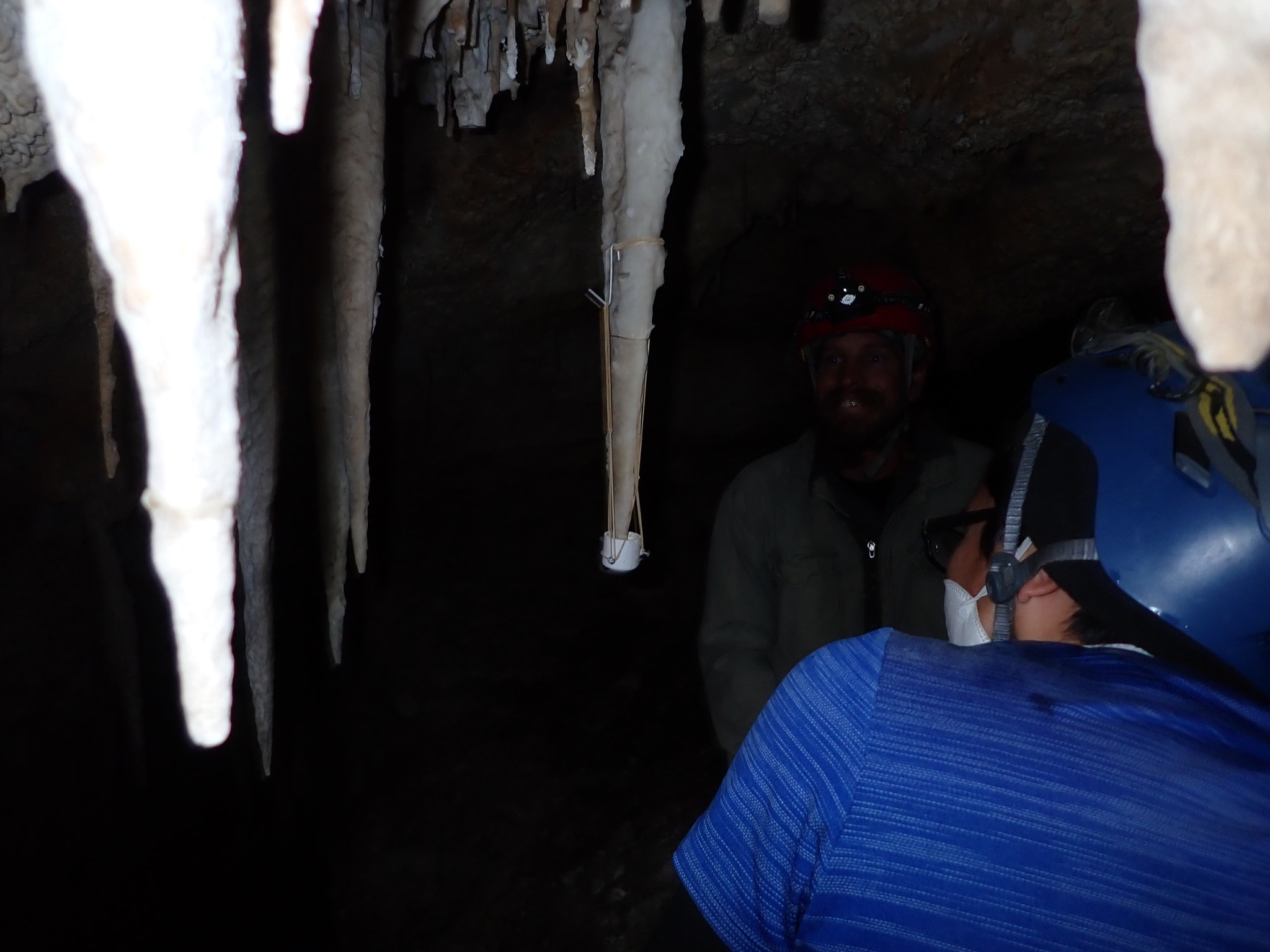
Help us spread cave conservation
Caves have biocultural, scientific and recreational values that are globally threatened, understudied, and poorly protected, yet, at the same time, cave tourism represents the best opportunity for the majority of the population to get a close glimpse of the ecological importance and the fragility of the underground ecosystems. In the Yucatan Peninsula, tourist caves and cenotes can be an important source of income, but to be successful, they must be managed to ensure their preservation.
Through this initiative we will advocate to advance bottom-up community care practices that benefit the preservation of the cultural, scientific and aesthetic values of caves. We believe that the willingness to repair, restore and conserve can arise from understanding the values and the losses in every damage resource. By training and educating people on techniques and tools to perform formation repairs, we will be providing a hands-on opportunity to engage in the philosophy of caring and repairing. With only 7% of the worldwide subterranean biome’s existent under an official denomination of protected areas (Sánchez-Fernández et al., 2021), communities of practice and volunteerism stand as two keystone principles to educate local communities on how to preserve, repair and maintain the underground ecosystems. The next time that you think about visiting a tourist cave, ask about their outreach programs. Many show caves are currently involving visitors in seasonal restoration programs and in citizen science projects. If you find that your cave guide doesn’t know about cave formation repair, you may be the right person to connect them with us.
To know more about other components of our Impact Project with The Maintainers and about how Karst Lab México is support the conservation of the subterranean ecosystems in Mexico, visit our website and share our StoryMap.
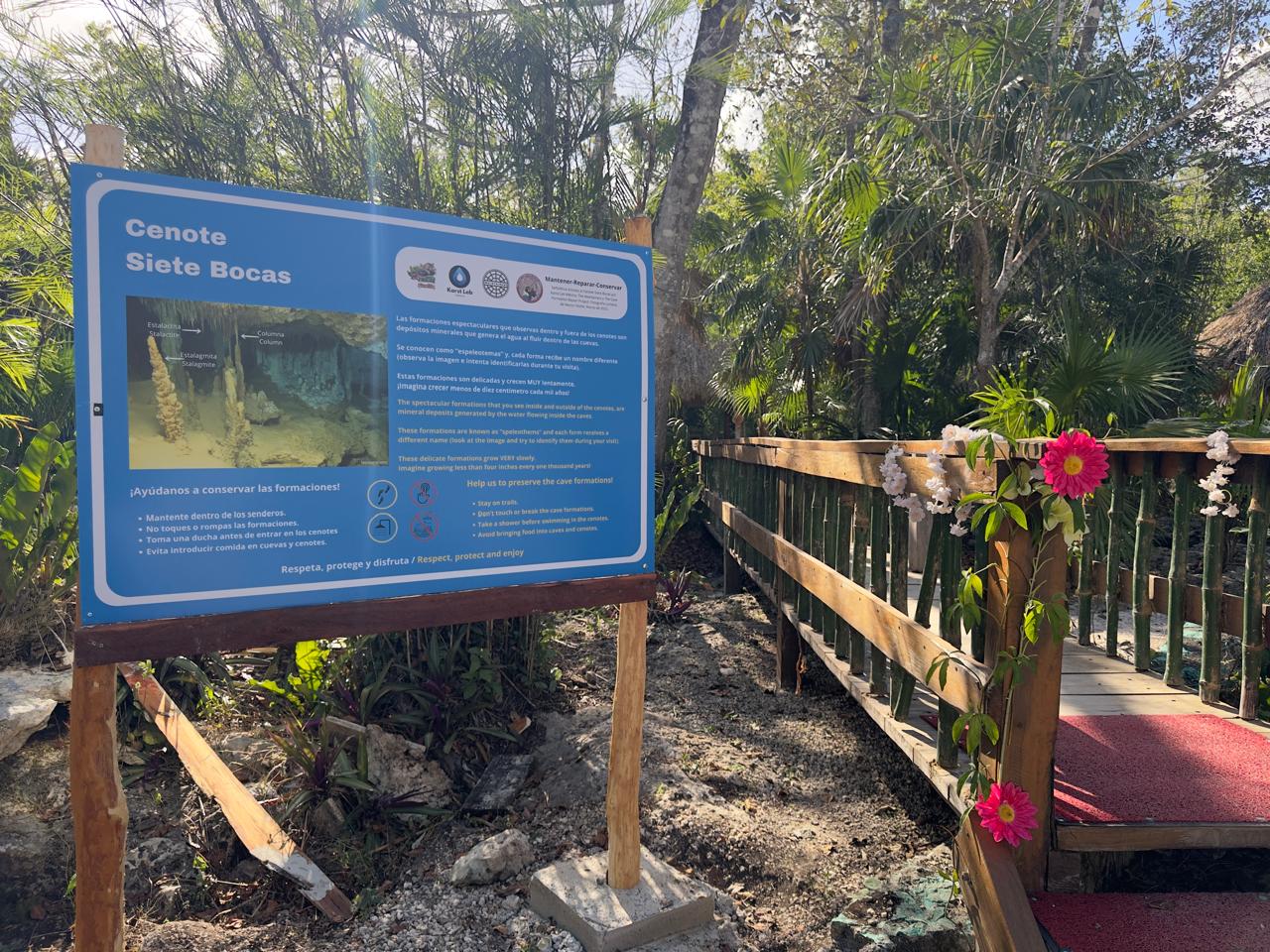
Acknowledgments
This project was made possible by The Maintainers Impact Fellowship 2025. My sincere gratitude to Lauren Dapena Fraiz and Liliana Coelho for trusting and supporting my process while developing this project. I am deeply thankful to The Maintainers Network and the Cave Formation Repair Project (CFRP) volunteers, for their warm welcome and all their advice. Thanks to the Carlsbad Caverns National Park for providing the lodging and permits to participate in a CFRP trip. This project would not have been possible without the engagement, the energy and the enthusiasm of Mike Mansur. He provided not only the logistical arrangements and shared knowledge, but kindly opened new opportunities to forthcoming projects together.
The Maintainers Impact Fellowship was supported by VR (Ex) Change. The Maintainers programs 2025 were supported by Siegel Family Endowment.